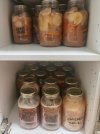Gabriela
Jedi
Hi guys! I'm just in the begining of the thread, learning and making notes... and this has nothing to do with what you're probably discussing today but this quote from the past is so accurate I just needed to give LQB credit for insight.There is another way to think about it. The PTB structure probably does not want utter collapse into chaos where no food is available - they would lose control in a hurry. They will probably go for controlled collapse in which they can institute all kinds of fascist control measures using "emergency" as excuse. They will provide food in exchange for compliance. This "food" is not likely to be anything that forum folks here would want to eat. So by storing your own food, you might avoid the compliance, and have food that is worth eating (since it may be hard to find post-collapse. Just my thoughts ...
Also thank you for the tips (up to page 7



